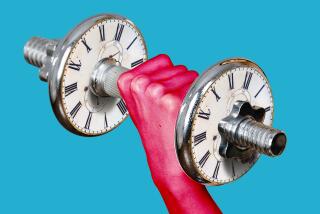Fibromyalgia and exercise: More tips from an expert
- Share via
Fibromyalgia expert Ginevra Liptan was our guest Monday for a Los Angeles Times Web chat. We didn’t get to answer all of the questions during our hour with Dr. Liptan, but she has answered a few more questions for us here.
Q: Are you advising against any kind of strength or lightweight training -- even if we are able to work it into our routine?
-- Cheri
Liptan: I wanted to clarify this important point. Aggressive strength training with heavy weights has been the only form of exercise studied in fibromyalgia found to make people feel worse, not better. However, light strength training has been shown to be helpful for fibromyalgia -- but the key here is figuring out how to do “light” strength training. This is where working with a physical therapist to develop an individualized program can be really helpful. And if you find strength-training exercises that you tolerate and that don’t exacerbate your symptoms, then it is a great thing to include in your routine!
When people are just starting out with exercise in fibromyalgia, I tend to recommend they avoid lifting weights or strength training completely, because it is the trickiest exercise to do in such a way that it does not cause a flare of pain. So I recommend starting with gentle aerobic exercises and then slowly working up to include gentle strengthening exercises if desired.
Q: Do you recommend drinking salty water during and after exercise even if you’re on Xyrem?
Liptan: Xyrem does contain a good bit of sodium, so use caution with additional salt in your diet. A pinch of salt in a quart of water is about equivalent to the amount of salt in a sports drink like Gatorade. Certainly, if you have high blood pressure in addition to fibromyalgia, adding salt to your water might not be safe, so use caution and discuss it with your doctor first.
Replay the entire Web chat.
Return to Booster Shots blog.






